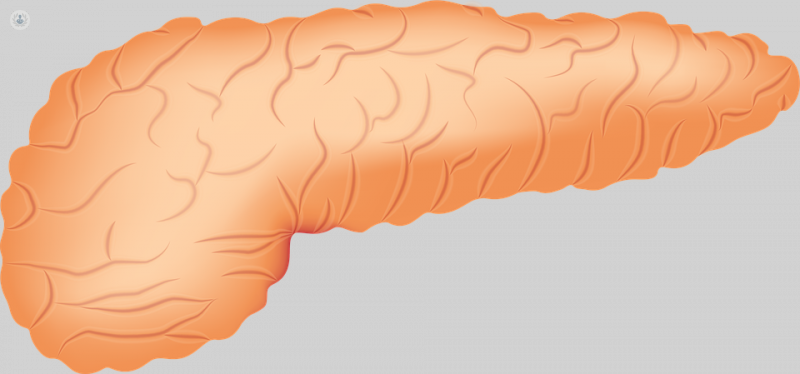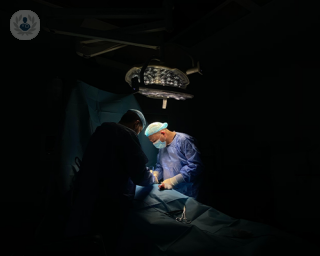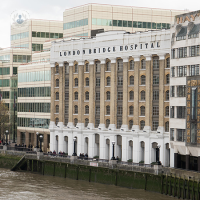Pancreas surgery
Mr Satyajit Bhattacharya - Surgery
Created on: 11-13-2012
Updated on: 06-02-2023
Edited by: Jay Staniland
What is pancreas surgery?
Pancreas surgery describes a range of procedures performed to treat the following illnesses:
- Acute pancreatitis
- Chronic pancreatitis
- Pancreatic cancer
Surgery for treating acute and chronic pancreatitis is called a cholecystectomy which is the surgical removal of the gallbladder.
Surgery for treating pancreatic cancer is often the only way to cure this form of cancer. There are a number of different procedures for surgically treating pancreatic cancer:
- whipple procedure
- distal pancreatectomy
- total pancreatectomy
- biliary diversion

Why would you have pancreas surgery?
If you are suffering from acute or chronic pancreatitis, surgery will be recommended to remove the gallbladder if you have been suffering from painful gallstones that are blocking the flow of bile. Removing the gallbladder ensures that you will no longer suffer from gallstones.
If you are suffering from pancreatic cancer, surgery will be recommended as the main option to the nature of pancreatic cancer being difficult to diagnose, and hence when it is detected it can often be quite advanced.
What does it involve?
A cholecystectomy can be performed in two different ways:
- Laparoscopically – a number of small incisions are made in your abdomen, and special instruments are used to remove the gallbladder. This is also known as keyhole surgery.
- Open surgery – one larger incision is made in the abdominal area to remove the gallbladder.
Both procedures are performed under general anaesthetic, but generally laparoscopic surgery is used more frequently because it is less invasive, and therefore has a quicker recovery period.
The different forms of pancreatic cancer surgery are carried out as follows:
Whipple procedure
The whipple procedure involves the removal of the head of the pancreas. To be able to remove the head of the pancreas, a section of the small intestine, the whole gallbladder and a section of the bile duct will also be removed. Following this, the bile duct and the pancreas are attached to the small intestine which means that bile, pancreatic enzymes and hormones are still released as normal.
The Whipple procedure is an intensive form of surgery.
Distal pancreatectomy
This procedure involves the removal of the body and tail of the pancreas. Usually the spleen, part of the stomach, bowel, left kidney, left adrenal gland are also removed.
This is also a lengthy, intensive surgery.
Total pancreatectomy
The entire pancreas is removed in this procedure. Depending on where the cancerous tumour is located, sometimes this procedure is the best option.
During this procedure, the following may also be removed:
- gallbladder
- spleen
- surrounding lymph nodes
- bile duct
- section of the small intestine and stomach
- once the pancreas is removed, it is necessary to take enzymes to aid the digestion of food.
- In addition, patients having this procedure will also have diabetes for the rest of their life. This is because it is the pancreas that produces insulin which is needed to control blood sugar levels.
How to prepare for pancreas surgery
Before having pancreas surgery, a series of tests will be run to determine if you are fit and healthy enough for surgery. It is also advised that in the time leading up to surgery, a healthy diet is followed, and smoking and drinking is avoided. You would also need to stop eating and drinking the night before surgery.
Before having pancreas surgery, tests will be carried out to ensure you are healthy and fit enough for surgery. You will also meet with the surgical team where the procedure will be thoroughly explained, as well as what to expect after surgery. The night before surgery, it is common to be given carbohydrate-rich drink which is designed to give you plenty of energy to aid recovery. You will also have an intravenous drip in your arm to prevent dehydration during surgery.
Post-operative care
If you have had laparoscopic surgery to remove the gallbladder, then recovery time is not long, with hospital discharge usually happening the next day. Patients usually return to their usual routines after two weeks.
If you have had open surgery, then recovery is longer, with a hospital stay of three to five days, and a six to eight week recovery period.
Straight after pancreatic cancer surgery, typically you will be kept in the intensive care unit, before being moved to the ward to recover. It is likely that after surgery there will be a number of drips and drains in place to drain fluids, measure blood pressure, manage pain and to hydrate you. If you have had a total cholecystectomy, then you will start taking enzyme supplements and insulin. You would also be shown how to administer these on your own. Generally, patients will stay in the hospital for up to two weeks.















